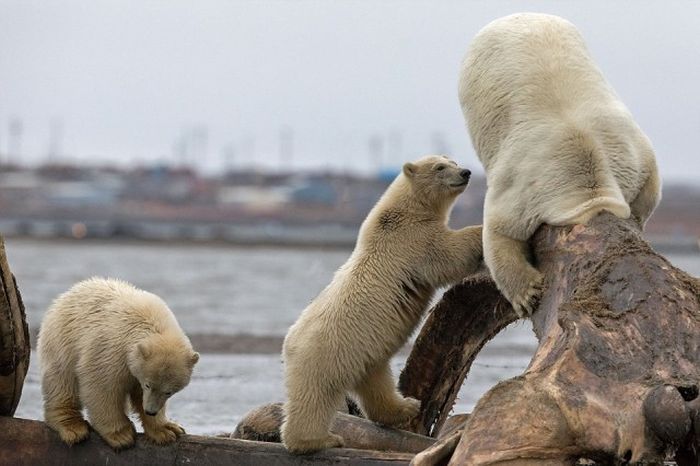|
|
Polar Bears Eating A Dead Whale, Alaska, United States
|
Of the 19 recognized polar bear subpopulations, 8 are declining, 3 are stable, 1 is increasing, and 7 have insufficient data.
The polar bear is often regarded as a marine mammal because it spends many months of the year at sea. Its preferred habitat is the annual sea ice covering the waters over the continental shelf and the Arctic inter-island archipelagos. These areas, known as the "Arctic ring of life", have high biological productivity in comparison to the deep waters of the high Arctic. The polar bear tends to frequent areas where sea ice meets water, such as polynyas and leads (temporary stretches of open water in Arctic ice), to hunt the seals that make up most of its diet. Polar bears are therefore found primarily along the perimeter of the polar ice pack, rather than in the Polar Basin close to the North Pole where the density of seals is low.
Annual ice contains areas of water that appear and disappear throughout the year as the weather changes. Seals migrate in response to these changes, and polar bears must follow their prey. In Hudson Bay, James Bay, and some other areas, the ice melts completely each summer (an event often referred to as "ice-floe breakup"), forcing polar bears to go onto land and wait through the months until the next freeze-up. In the Chukchi and Beaufort seas, polar bears retreat each summer to the ice further north that remains frozen year-round.
|
|









